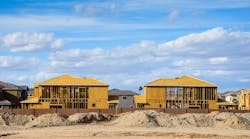Latest from Economic Data
Electrical Marketing - December 20, 2024
Electrical Marketing's Key Economic Indicators
How to Find Key Construction Segments Still Shining in a Sluggish 2019 Market
With the 1Q 2019 top-line new construction data pointing toward a slow-growth/no-growth construction environment so far in 2019, it will be more important than ever to identify pockets of growth. They are out there, both by region and in select construction segments.
Regionally, you can look at local construction project data and construction employment trends down to the metro and county level to get a sense of which market areas are most active, and Electrical Marketing provides regular updates on these construction metrics. To get a snapshot of the activity by top-level construction category, check out the U.S. Census Bureau’s monthly Value of New Construction data from its C30 report, which EM publishes in the first issue of each month.
It’s also interesting to look at the data for more detailed individual segments. We pulled out the 50 largest individual construction segments in the chart on page 2.
Let’s look at this data from the top down to get a sense of the most important construction segments. Private new construction clocks in at $961.5 billion, down -3.6% year-over-year (YOY) through March. It accounts for 75% of all construction in the United States, and Public Construction, at $320.7 billion (up +8.6% YOY) accounts for the other 25%. Private residential construction (running at $500.9 billion through March, a -8.4% YOY decline) is the largest individual construction category at 39.1% of total construction; followed by Private Nonresidential Construction (35.9%); and Public Nonresidential Construction (24.5%); Highway & street (8.1%); Power (7%); Private Commercial Construction (6.4%); Public Educational Construction (6%); and Manufacturing (5.5%).
Things get even more interesting as we drill down into the close to 100 individual construction categories (available at www.electricalmarketing.com; 50 largest on page 2). Here are the Top 10, as measured by their share of total construction: single-family construction; electric power; general office construction (private); multi-family; commercial warehouses; chemical manufacturing; public high school; private hospitals; public elementary schools; and private instructional facilities.
Now let’s look at some of those pockets of growth. Construction data can vary wildly from month to month as new projects break ground and contractors finish up jobs, so let’s look at the YOY data. Although it’s a relatively small niche within the overall construction market at $2.53 billion, lighting for highway and street applications stood out because its March data shows double-digit increases by both monthly % change (+21.1%), and YOY change (+49.2%). Only two other construction categories had monthly increases of more than 10%: Breakwaters & jetties (+20.7%) and Pump stations (+14.4%).
We found 28 individual categories showing double-digit growth in YOY new construction put in place, led by Computer/Electronic/Electrical Manufacturing (+84.6%); Neighborhood Centers (+75.9%); Automotive (Commercial public construction (+65.7%)); Social Centers (Public amusement & recreation (+65%)); and Lighting (Highway & street) (+49.2%)).
Obviously, the mix of business from the national Value of New Construction for March will vary some as different niches have unique business cycles, and the regional construction mix will differ for every market. And very few local markets (if any) would see new construction for the 90-plus individual construction markets. But it’s worthwhile to take the time to identify the hottest construction segments on a regional or national basis because it will give you fresh insight into what makes the overall construction market tick. You may find some new customers that focus on some of these construction niches, or possibly a new business niche for your own business.









